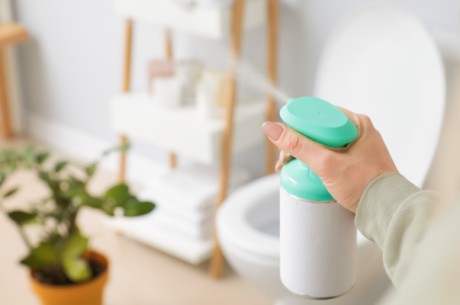Have you ever walked into a room and been hit with a foul, overpowering smell that immediately has you wanting to escape?
Gross odors are an unfortunate fact of life, and they arise from various sources. From forgotten gym bags and excited pets to smoke damage and harmful mold, stinky aromas in your home can cause discomfort, frustration, poor indoor air quality, and even health issues.
Fear not! Here at PuroClean of Evanston, we’re not just highly skilled in mold remediation and disaster recovery, we’re also odor-elimination aficionados. Stinks and stenches are par for the course when helping homeowners recover from water damage, fire and smoke incidents, sewage backups, and biohazard situations.
Let’s take a deep breath and dive into the science behind malodors, identify common culprits, and cover some powerful strategies to neutralize and eliminate them. Get ready to conquer those stultifying smells with these expert insights from our industry pros!
Decoding the Source of Stinkbombs
According to Steve Horenziak, Principal Scientist for Febreze, stinks are a matter of “chemistry, evolution, and perception.”
Your sense of smell is a valuable source of information, a survival mechanism to warn us of danger, help us find food (and avoid edibles that have gone “off”), and assist in creating memories.
What is it exactly that makes something smell awful? Odors are essentially invisible airborne molecules that tickle our olfactory receptors in the nose, sending signals to the brain that we interpret as a scent, whether it’s good or bad.
The intensity and character of an odor depend on the type and concentration of these molecules. Organic materials, like food waste, mold, or pet accidents, are notorious odor offenders. These materials harbor bacteria and microbes that love to munch on them, releasing volatile organic compounds (VOCs) — the stinky culprits we detect as unpleasant stenches.
The Usual Suspects
Common sources of VOCs in your home include:
- Cleaning products
- Cooking or spoiled food
- Garbage cans
- Paints and construction materials
- Dry-cleaned clothing
- Cigarette smoke or the aftermath of a house fire
- Craft supplies
- Home furnishings
- Fires and furnaces
- Sewage
- Mycotoxins (mold and mildew)
- Deceased vermin
These airborne compounds can be a major red flag that something harmful lurks in your home. If you or a loved one develops ill effects like these, it’s time to see your healthcare provider and call in a professional odor remediation team:
- Ear, nose, or throat irritation
- Dizziness
- Nausea and vomiting
- Headaches
- Wheezing, trouble breathing, or worsening of asthma symptoms
Mold spores are present in almost every building and home, all over the world. They thrive in dark, moist areas and emit an unmistakable musty or earthy odor. These fungal pests can be tenacious and deadly, especially for children, the elderly, and immunocompromised individuals.
Plumbing emergencies and extreme weather events can result in raw sewage making an unwelcome appearance in your previously spotless home. This material has a distinct stench due to the presence of ammonia, hydrogen sulfide, bacteria, and other air contaminants that can make you sick.
Overdue trash removal is another recipe for odoriferous disaster, with decaying organic matter releasing a cocktail of nasty VOCs.
Don’t Just Mask the Smell — Eliminate It
Once you pinpoint the source of the funky aromas in your home, there are several effective strategies to remove the culprit and clear the air.
The first step to improving your aromatic environment is getting rid of the source, such as taking out the trash, addressing plumbing issues, and doing some deep cleaning. Ventilation is key and fresh air is your friend, so be sure to open doors and windows and utilize fans to increase circulation.
Pantry staples like baking soda, lemons, and white vinegar are household heroes when it comes to disinfecting and deodorizing. You can sprinkle baking soda on carpets, upholstery, and trash cans to “soak up” distressing smells, and diluted vinegar cleans windows, pet-related carpet stains, and skunk odor. Important safety note: never mix vinegar with bleach, as it can create toxic fumes from chlorine gas.
Certain houseplants, like snake plants, pothos, and English ivy, can help naturally filter pollutants from the air. Regular home maintenance, including vacuuming carpets, changing air filters, and taking out the trash, can help prevent odors from accumulating.
Recognizing When DIY Isn’t Enough
While some odors can be tackled with DIY methods, some situations require professional intervention. Here are some signs it’s time to call in the experts at PuroClean of Evanston:
- The odor is persistent and overpowering.
- You suspect mold growth. Mold remediation requires specialized training and equipment to ensure complete removal and prevent health risks.
- The odor source is hidden or difficult to access.
- You’ve tried several methods without success.
Our team utilizes industrial-grade air scrubbers, high-capacity dehumidifiers, specialized cleaning solutions, and expert techniques to destroy odor-causing bacteria, VOCs, spores, soot, and more.
We understand that experiencing a stinky problem can be stressful, so we prioritize clear communication and keep you informed throughout the process. Reclaim your olfactory peace of mind — reach out to us today!




 PuroClean of Evanston
PuroClean of Evanston